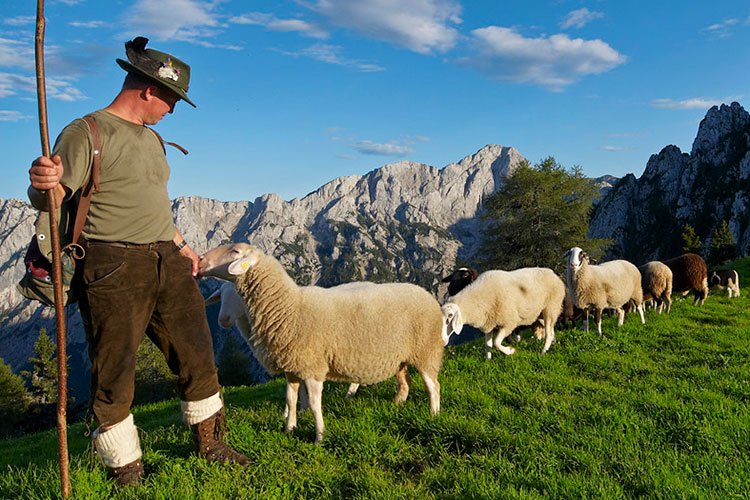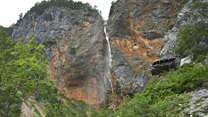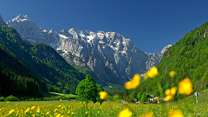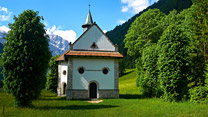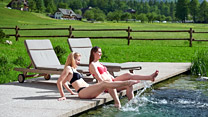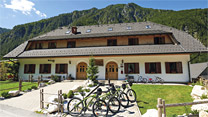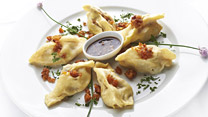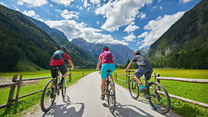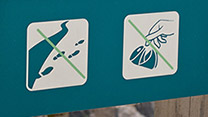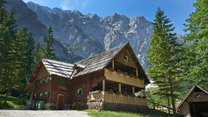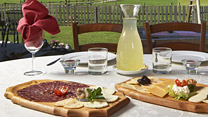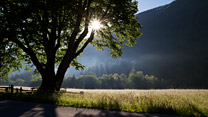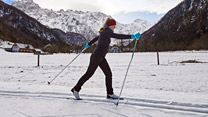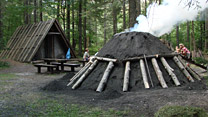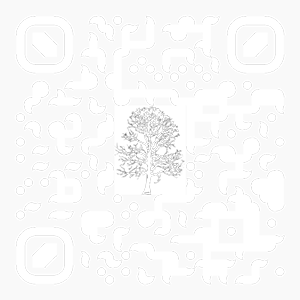Animals
GOLDEN EAGLE
(Aquila chrysaetos)
Golden eagles nest in the wider area of the Logar valley.
Adult birds measure up to 90cm from the beak to the tail, and have a wingspan of more than 2 metres. They nest in remote mountainous areas, usually on rock ledges. The golden eagle is the largest bird that lives in Slovenia.
Due to hunting, golden eagle numbers fell dramatically in the past, so it is now protected everywhere. It is estimated that around 25 pairs live in Slovenia.
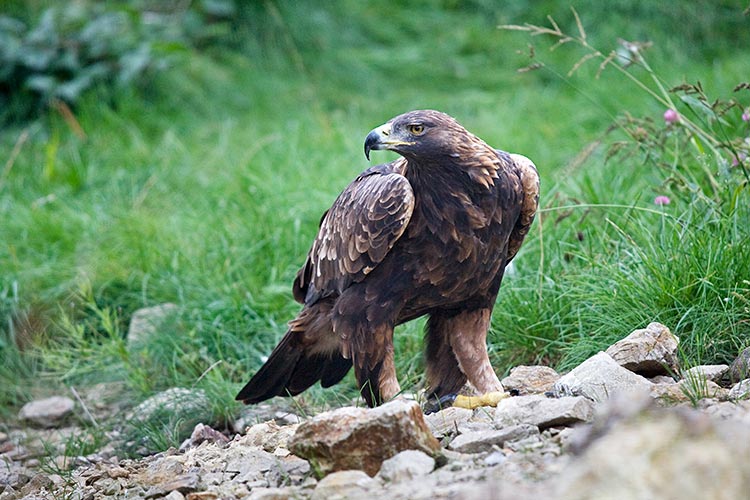
PEREGRINE FALCON
(Falco peregrinus)
The Logar valley is also the habitat of the peregrine falcon.
Adult birds measure up to 55cm from the beak to the tail and have a wingspan of up to 120cm. They need a safe nesting area, which is usually on a shelf or in a rock wall above the open landscape. They are rare nesting birds whose nesting sites are scattered throughout Slovenia in the Julian Alps, the Karavanke, the Kamnik-Savinja Alps and other rocky areas.
Although threatened by poaching, tourism and pesticide pollution, the nesting population has been gradually increasing in recent years.
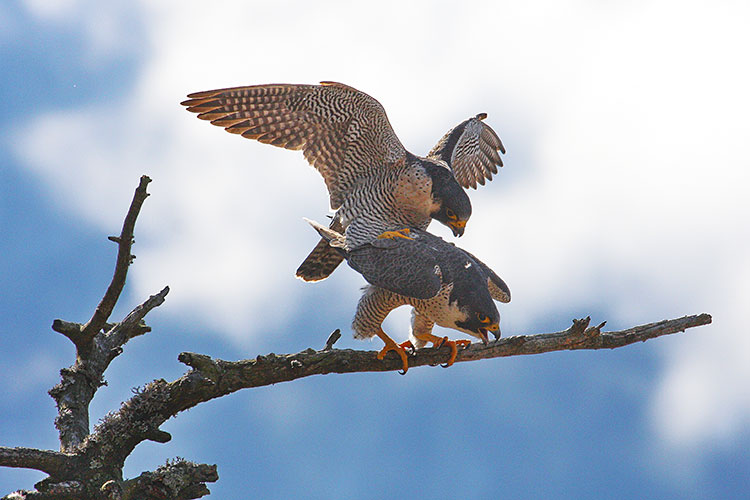
CHAMOIS
(Rupicapra rupicapra)
With a little luck, you can observe chamois in the higher areas above the Logar valleey.
Chamois grow up to 1m in height and can weigh up to 30kg. They also thrive well on the steepest slopes, where they need only the smallest of ledges on which to move around.
The natural enemies of adult chamois are only the wolf and the lynx. Mountain eagles are especially dangerous to goatlings. Among chamois, the highest mortality is due to falls over walls and landslides. An important cause of mortality is also parasitic diseases, which have decimated our chamois tribes several times in the past.
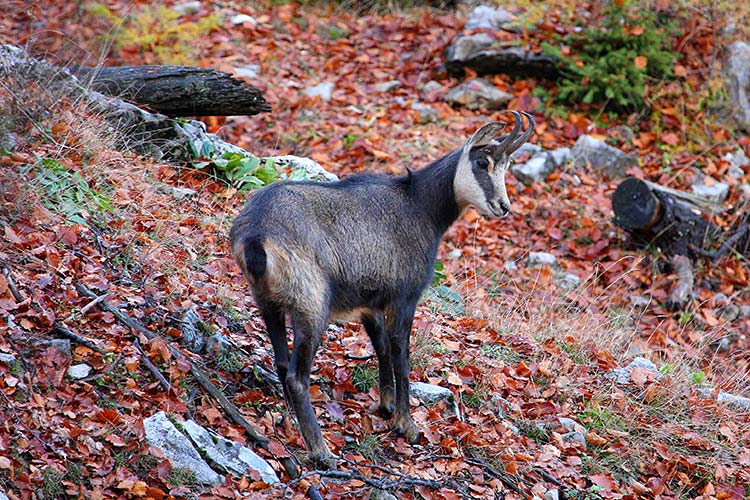
ALPINE IBEX
(Capra ibex)
With a little luck you may also see alpine ibex in higher-lying areas above the Logar valley.
Alpine ibex is not an indigenous Slovenian species; they were gradually introduced to the Slovenian Alps after the year 1890 from Switzerland and Italy.
Alpine ibex live on open rocky terrain above the forest boundary, higher than chamois, even over 2,000m. During winter they often descend to the forest due to a lack of food. They can be distinguished by their large horns, which are ridged on the front. The horns on adult males can grow to almost one metre, while female horns are only around 30cm.
Alpine ibex have almost no natural predators in Slovenia.

BLACK GROUSE
(Lyrurus tetrix)
Also known as: Eurasian black grouse, black game, black cock
The black grouse is classified as a forest hen. In Slovenia they live exclusively in the mountains, most commonly on the fringes just above the forest boundary in the mid- and high mountains.
Black grouse are very rare in Slovenia. They have numerous predators, including brown owls, foxes, martens and badgers, and through agriculture, forestry, tourism and sports, humans pose the greatest threat to the species.
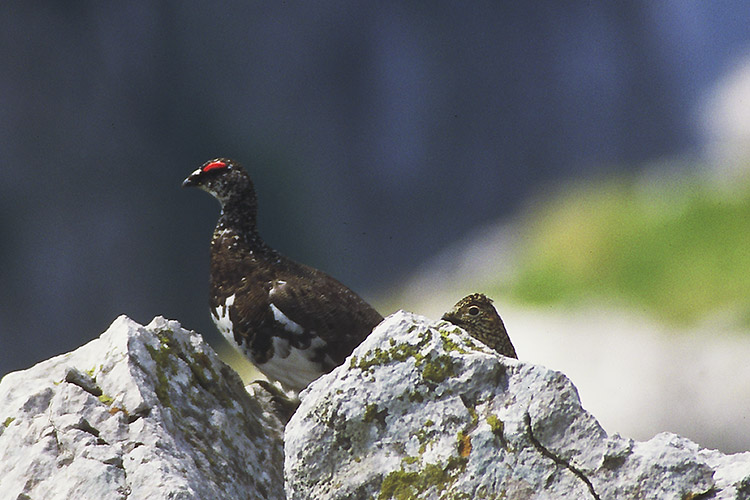
JEZERSKO-SOLČAVA BREED OF SHEEP
The Jezersko-Solčava sheep is an indigenous breed of Slovenian sheep. They graze in the mountains above the Logar valley, and is the most prevalent breed of sheep in the country.
The Jezersko-Solčava sheep was created by crossing a primitive domestic white sheep with a Bergamo and Padua sheep. The characteristic convex profile of the nose and head come from the Bergamo sheep, while the quality of the wool was inherited from the Paduan sheep. They are mostly white, but are also black, dark brown or black and white. In white sheep, a dark coloured spot around the eyes (‘glasses’) or under the eyes (‘tears’) and on the tips of the ears is a desirable feature.
